Henry Faulkner and Alice, his bourbon-swilling goat
Aug 17, 2020 Sara Dacus/TwinSpires.com
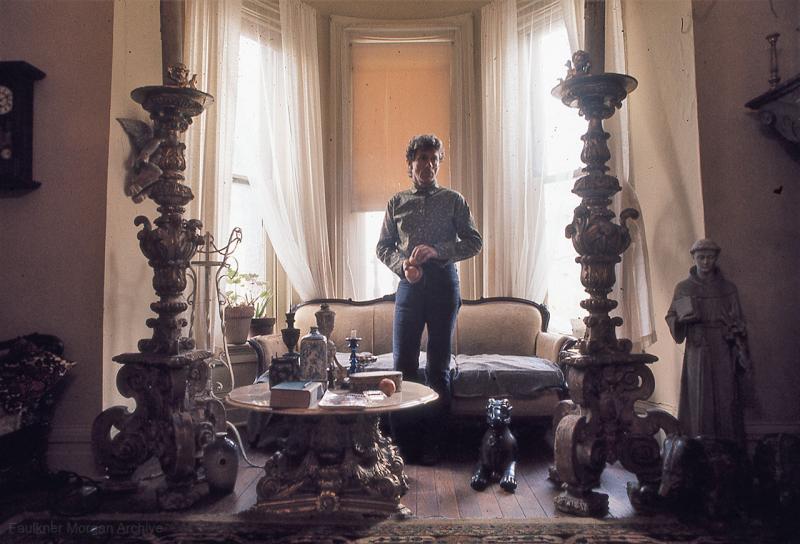
“…I got to checking and I found out that she was drinking only bourbon, and she wouldn’t touch anything else . . .'
Painter, poet, and performance artist Henry Lawrence Faulkner, a native Kentuckian, created a life filled with as much color and more animals than the Kentucky Derby, and it occasionally intersected with Louisville’s iconic event.
Known for vibrant landscapes and fantasy scenes, his more than 5,000 works explode with butterflies, lemons, goats, and flowers and range from simple Kentucky villages to Italian vistas. Acclaimed modernist poet Ezra Pound, his fellow inpatient for psychiatric care at St. Elizabeths Hospital, encouraged Henry to be an artist.
Later, friendships with Pulitzer prize-winning playwright Tennessee Williams and James Herlihy, author of Midnight Cowboy, nurtured his imagination. At one time Faulkner invented a fiction that he was related to Nobel Prize laureate William Faulkner. But his most famous companion was not Pound nor Williams, but Alice, his bourbon-swilling goat. A welcomed companion who accompanied him to gallery openings and followed him, unleashed, on walks down the streets of Lexington, Kentucky.
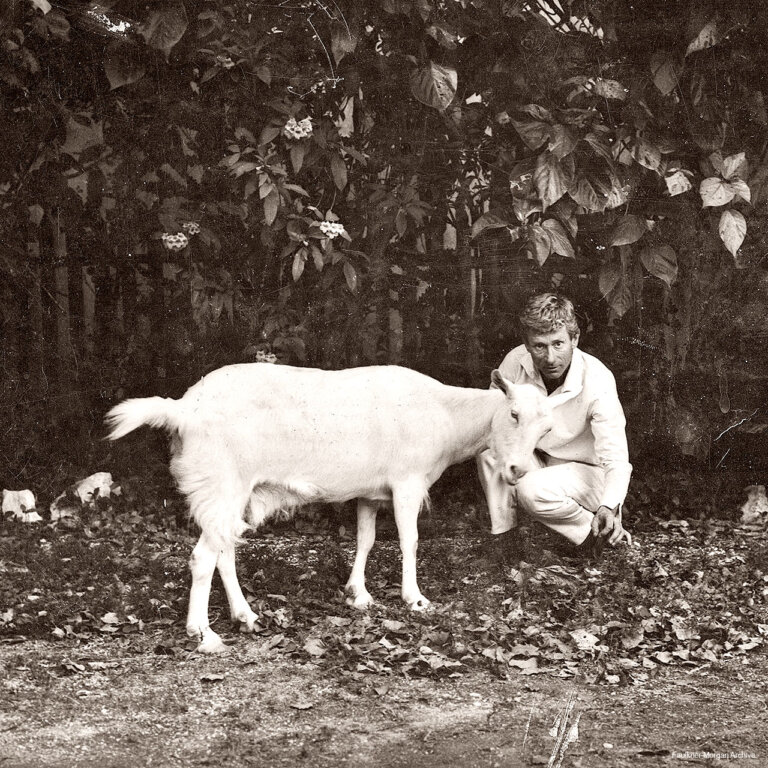
Alice the Goat with Henry Faulkner (Faulkner Morgan Archive)
Faulkner’s background was unconventional too. His father, John Milton Faulkner, had eight children with his first wife, who died when John was 43. John produced a second family with Bessie, his son’s 16-year-old girlfriend, whom he abducted at gunpoint. He took her to Gallatin, Tennessee, where his brother operated a racetrack, and they were married the day of the abduction and spent a two-week honeymoon at the track.
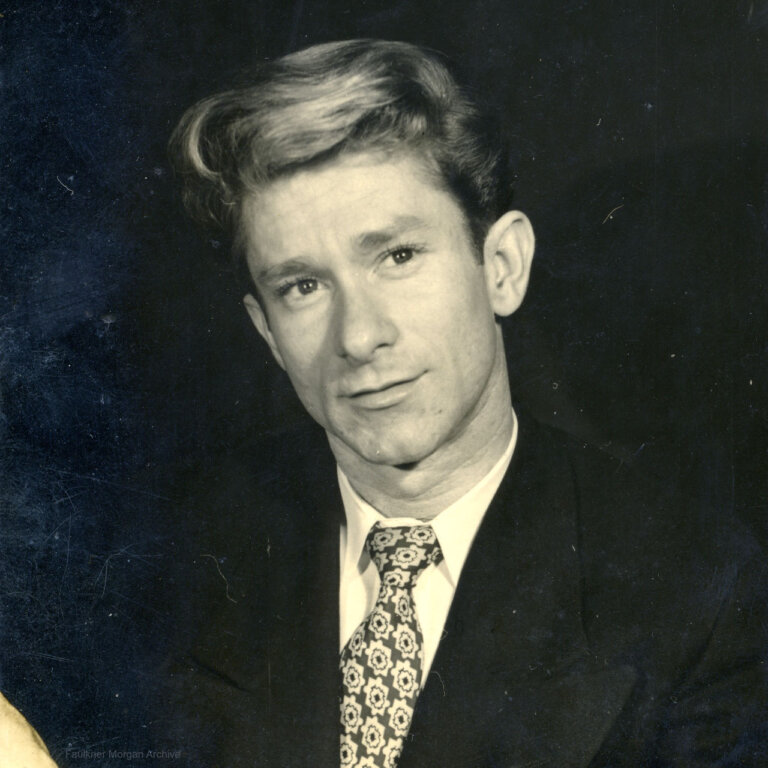
Born on January 9, 1924, in Holland, Kentucky, Henry was the 10th of Bessie and John’s 12 children. When Henry was two, Bessie died of cancer at age 34, and the children were sent to a Louisville orphanage. After two failed foster placements, at age six, Faulkner went to live with a couple in Falling Timber Branch. He was often out of place and at odds with the small rural community because of his effeminate nature. His foster parents considered art the devil’s work. Several times he was removed from their home because of various issues, but Faulkner considered Falling Timber home and returned intermittently the rest of his life.
During one period away from Falling Timber, he stayed briefly with his brother and sister-in-law in an apartment across the street from Churchill Downs. Faulkner was enrolled in Louisville Junior Art School and was able to thrive there despite having to move to a boarding home when his brother’s marriage ended.
When Faulkner came of age and was released from the custody of the state, one of his first stops on a roundabout journey west was to Birmingham with a photographer friend he’d met at the Kentucky Derby. Faulkner worked as a gaffer and helped with composition. For the first time, he used the skills acquired in art school in a professional setting.
His twenties were filled with travels around the country. He worked odd jobs, landed in jail several times, and enjoyed occasionally performing as a female impersonator. He was enrolled briefly at Berea College and later in the Corcoran School in Washington, D.C., where he lost his scholarship after being arrested for soliciting a police officer. After another homosexual encounter, he was sent to St. Elizabeths Hospital for more than 11 months with a diagnosis of “sexual psychopathy.” While there, he was housed in the same building as Pound, whose political beliefs rather than his mental state are the probable cause of his inpatient stay.
When he left St. Elizabeths and Pound’s tutelage, Faulkner had a renewed determination to become an artist. After nearly three years of study at the Otis Art Institute of Los Angeles County, he returned to Kentucky and established a home base in Lexington. But his career as a painter began to take off on a trip to New York in 1957. There he sold his first painting, and several of his pieces were featured in a group show.
Success came quickly. He held his first one-man show in Coral Gables, Florida. Exhibits in Atlanta, Louisville, Cincinnati, Washington, D.C., and New York followed. Collectors of his work included Bette Davis, Nat King Cole, Marlon Brando, and Kentucky Governor Bert Combs. Tennessee Williams purchased one of his paintings at an exhibit in Coconut Grove, Florida, and they became close.
RELATED: How to bet at a Kentucky Derby party
Art shows also gave Faulkner an entrée into the thoroughbred social scene, hobnobbing with the likes of C.V. and Mary Lou Whitney as well as Anita Madden. Faulkner was invited to Madden’s epic Kentucky Derby Eve parties that attracted more than 2,500 guests to Lexington’s historic Hamburg Farm.
Faulkner dreamed of creating his own palatial estate in the Bluegrass – a villa. The inspiration came during a year-long sojourn in Europe, especially his time in Taormina, Sicily. He returned to Kentucky and purchased an 11-acre farm eight miles south of Lexington.
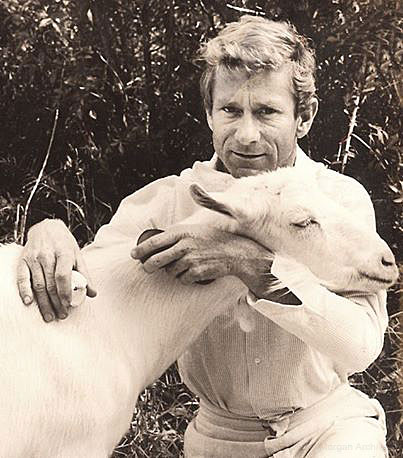
Alice the Goat with Henry Faulkner (Faulkner Morgan Archive)
Instead of a villa, though, Faulkner built a vast animal family. He acquired Alice the goat, who became legendary as his constant companion. No event was too posh for her, and she attended soireés and gallery openings and was often included in newspaper reviews. At one of Tennessee Williams’s parties, Faulkner realized Alice liked bourbon.
“I noticed one night that she would go around and she was sniffing everybody’s drinks and she would only drink out of certain ones,” he told an interviewer. “And I couldn’t understand why she was doing that. I got to checking and I found out that she was drinking only bourbon, and she wouldn’t touch anything else . . .”
She would often drink it to excess and become inebriated.
Faulkner’s sister said one of her fondest memories was of Henry dancing in the moonlight with Alice to music from a car radio.
“I do believe Alice was almost human,” she said.
Faulkner found her to be more ethereal.
“She almost has wings,” he said in a Miami Herald article, “and I’m sure if they would pop out they’d be gold.”
Faulkner bought a winter home in Key West and established a pattern of spending winters there and the remainder of the year in Lexington. While he was in Key West, he found caretakers for the animals on his farm but would take Alice and other favorites with him. Eventually, the menagerie grew to include 25 cats and several dogs sojourning in a station wagon.
One time, Alice disappeared, and the Associated Press released a story with the lead, “Has anybody seen Alice?” on its national wire. She returned home a few days later, and Faulkner became even more protective of her.
Faulkner incorporated Alice into hundreds of paintings. Sometimes he would paint in his backyard, surrounded by cats, dogs, Alice and her “husband,” a goat named Plato. Faulkner’s friend, photographer Marie Cosindas, featured him with Alice and Plato in her groundbreaking book. Alice became pregnant, and when she delivered twins, the Key West newspaper reported on the arrivals of Martin Luther King and Margaret.
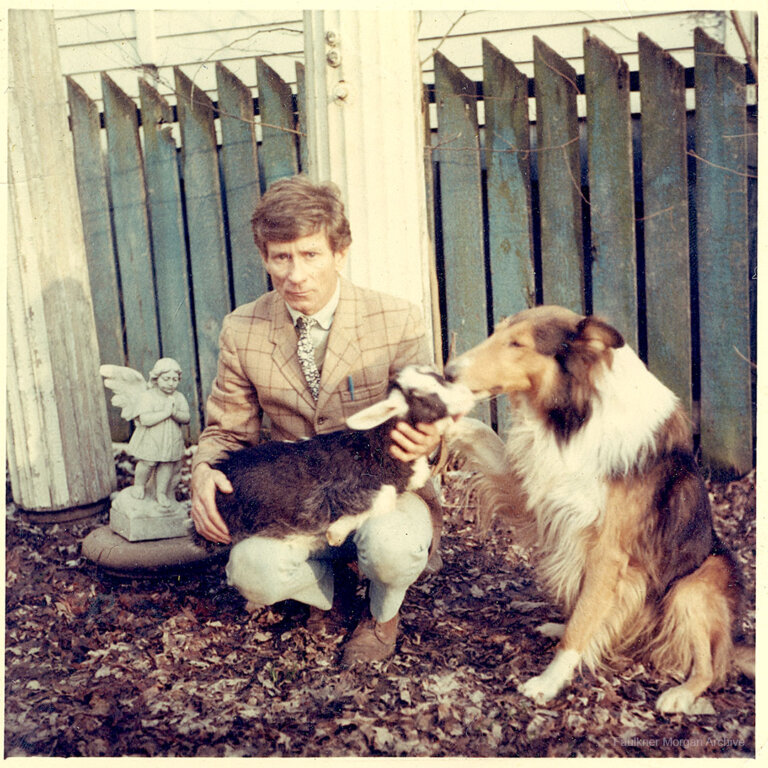
Henry Faulkner with Gentry the dog and unknown goat (Faulkner Morgan Archive)
Alice sparked additional interest in Faulkner’s work. Encouraged, Faulkner became more flamboyant in living his life as art. Once, during a University of Kentucky football game, he interrupted the halftime show, walking across the field with a goat at his side, holding a rabbit on a heart-shaped pillow. This put the crowd, many of whom recognized him, in an uproar.
As Faulkner withdrew further into his own reality, he lost control over his affairs. His house was overrun by cats. He began hoarding collections, including antiques and newspapers. The basement of his Lexington home filled up, and then the jumble sprawled into his house, yard, and garage. His finances also fell in disarray.
He felt he was in an artistic rut. In 1971, he created a lithograph for the mass market titled “In the Winner’s Circle” which featured a horse wearing roses and his human connections. Fearing his work was static and predictable, he fought his demons by immersing himself into reading and writing poetry while sporadically returning to painting, art shows, and parties.
He occasionally exhibited his old flair, but his exultant states were tempered by periods of depression. He battled physical ailments and became fixated on death, especially after several favorite members of his animal family died. When Alice passed, he fell into a deep depression. His preoccupation with mortality led him to attend the funeral of Loretta Lynn’s mother, even though he had never met either woman.
Tragically, Faulkner’s own life was cut short. He was killed by a drunk driver in Lexington on December 5, 1981.
The Lexington-Fayette County Metro Government memorialized him as a “man who lived his own legend.” As a more enduring legacy, fellow artist and friend Robert Morgan helped establish the Faulkner Morgan Archive to celebrate Kentucky’s LGBTQ history.
If you’re sipping a mint julep on Derby Day, raise a toast to Faulkner, who helped created a culturally richer Kentucky, and his beloved Alice.
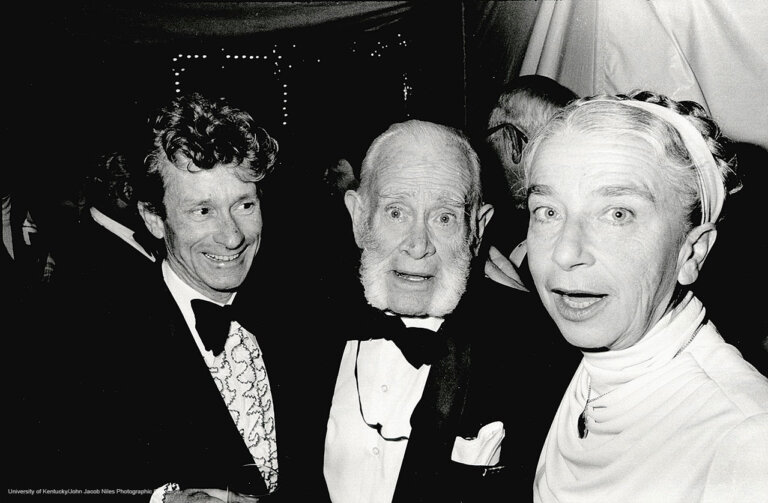
Henry Faulkner with John Jacob and Rena Niles in 1961 (University of Kentucky/The John Jacob Niles Photographic Collection/Bill Burke)
RELATED: Have a favorite horse for Derby Day? Our experts do, see if you agree…
For a complete biography, see The Outrageous Life of Henry Faulkner by Charles House.
All images are from the Faulkner Morgan Archive, unless noted otherwise.
Ticket Info
Sign up for race updates and more
Premium Concierge Experience
ENJOY EXCLUSIVE PERKS WITH OUR PREMIUM CONCIERGE SEATS AVAILABLE NOW!
For Premium tickets, give us a call at 5026364447

Calling All Derby Enthusiasts to Post
The Road to the 151st Kentucky Derby is underway! Submit your email and receive newsletters for all things Kentucky Derby directly to your inbox.
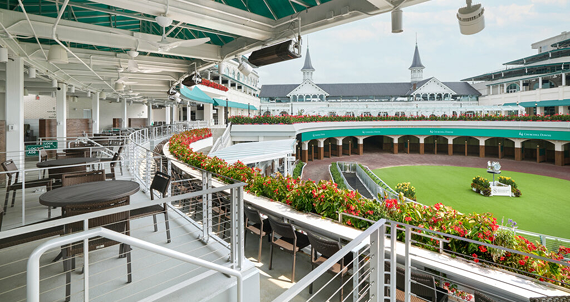
Kentucky Derby Seating Experiences
There are several ways to experience the running of the Kentucky Derby.
For Premium tickets, you can give us a call at 502-636-4447 or click on the button below to get connected to one of our team members.